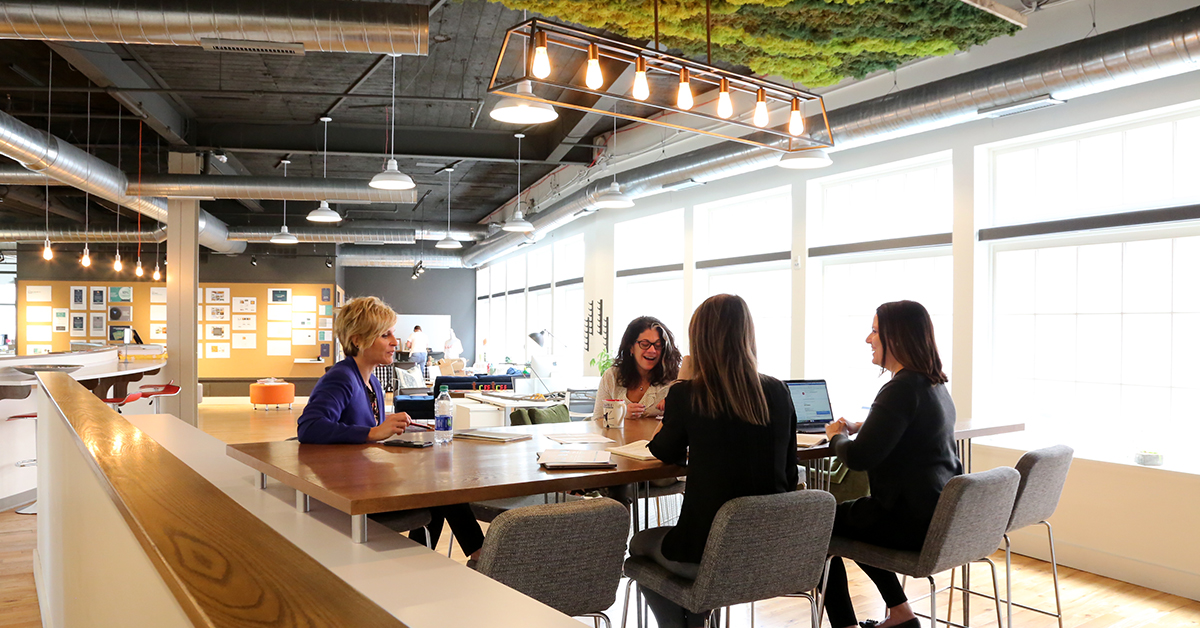
We’re wired to want to be right. It’s just part of how we’re built. We associate wrongness with humiliation—a sure confidence crusher. So, as far back as our childhood classrooms, we’ve chased the feeling of rightness. And our lifelong avoidance of being wrong has kept us stressed, sweaty and silent, most certainly stopping some of those wrong (read: best) ideas from ever getting air.
Being wrong as an aspiring leader—or even a tenured one—comes with its own set of paranoias. Does a wrong answer or crazy idea make us look stupid? Does it tell people we’re inexperienced? Is it a career path killer?
The truth is, in an industry where marketing challenges come in all shapes and sizes, being right often kills the best solutions before they’re even imagined. In the words of Joseph Chilton Pearce, “To live a creative life we must lose our fear of being wrong.”
So, how do we embrace vulnerability and open up our mouths to open up possibilities? Here are three simple practices that can help create an environment in which being wrong is oh so right.
1. Ask, don’t tell.
Having the absolute perfect answer, perspective or idea shows the world we know things. It establishes credibility and instills confidence. But being the one with all the answers gets old. Because, eventually, people start to seek us out for our rightness.
And when we’re not in the room, our teams can be paralyzed by the fear of being wrong—or even just not being right. This environment leaves zero room for people development or idea refinement. It stifles growth and creates dependence instead of fostering exploration, experimentation and creativity.
When you answer every question with curiosity instead of an actual answer, magic happens. Instead of going down the same familiar, comfortable path where things are safe and predictable, curiosity leads us to new places.
People feel empowered and trusted.
So, the next time your team looks to you for the solve, try responding with, “What do you think?” Then zip it and listen.
2. Embrace Yes, and.
A cardinal rule of improv is to say “Yes, and.” It goes like this:
I’m happy.
Yes, and it’s because you’re living in a house made of ice cream.
Yes, and the unicorns outside are ready for a rainbow ride.
Yes, and when we get to the moon we should go camping.
The free-floating feeling of having no idea where you’re heading but agreeing to go along for the ride is thrilling—and often hilarious.
Creative problem-solving is no different. Accepting information at face value and building onto it is liberating. When we don’t waste time on the “no’s,” we get more creative ideas in a shorter amount of time. When people are building and supporting each other’s ideas quickly, they tend to filter and judge less.
And when you take filters off early in the brainstorm process, you allow ideas to go to new places and discover new connections that conventional wisdom doesn’t account for.
Adding “Yes, and” to conversations gives things a fresh pace, energy and momentum. It gives the people who practice it confidence that they can create something out of nothing and make it kick ass. It’s how you go from one half-baked, not-quite-polished suggestion to a giant pile of holy-cow-how-did-you-guys-think-of-that ideas.
And it’s downright impossible not to smile when you respond to an off-the-wall notion with acceptance and willingness to go along for the ride with two simple words.
3. Seek hole pokers.
One of the most courageous and necessary things we can do as creative thinkers is to intentionally seek out critique and feedback.
After all, what challenge or growth lies in hitting it out of the park the first time?
In an agency, client service team members are the most obvious partners with whom to vet. But think beyond them. Find the people who don’t think like you do. Involve them in assessing ideas and thinking through solutions. Challenge them to foresee potential pitfalls. Wear your black hat and look closely at risks. Ask all the questions. From every direction. Beat up every idea. Or just WIP it.
At treetree, we do a daily WIP (work in progress) session in which the challenges of the day or week are shared with relevant team members. We review the brief, the strategy and the proposed solution, sometimes in very raw form. And then we ask for feedback. In some organizations, this kind of process can result in a bloodbath, but when there’s alignment on expectations and rules of engagement, holes are poked then filled. And ideas are polished.
Ultimately, creating a safe space for wrongness or failure is the clearest way to reach true innovation. In the words of Brené Brown:
So many leaders fail to realize that without vulnerability there is no creativity or innovation. Why? Because there is nothing more uncertain than the creative process, and there is absolutely no innovation without failure. Show me a culture in which vulnerability is framed as weakness and I’ll show you a culture struggling to come up with fresh ideas and new perspectives. I love what Amy Poehler had to say in her web series Smart Girls: Ask Amy: “It’s very hard to have ideas. It’s very hard to put yourself out there, it’s very hard to be vulnerable, but those people who do that are the dreamers, the thinkers, and the creators. They are the magic people of the world.”
Create a magical place.
